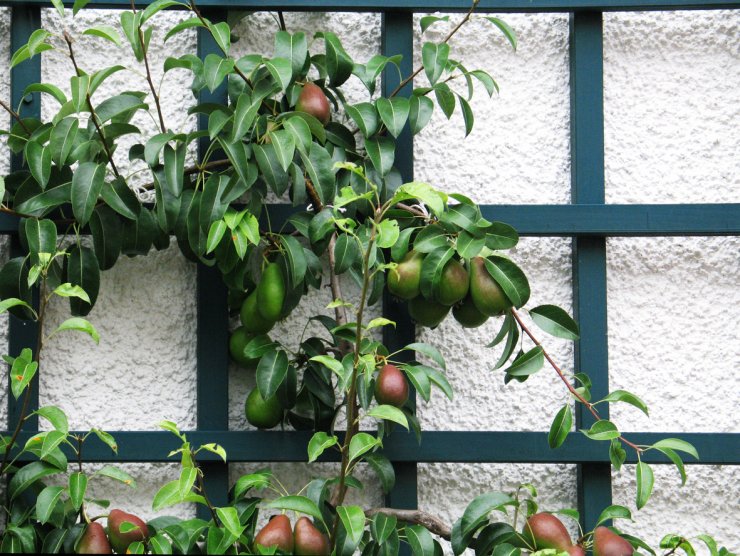
Pear tree trained to lattice against wall
Just because a pear tree can grow to a height of 30 feet doesn’t mean it has to. You will control the reach and spread of your trees through training and pruning. Pruning encourages the trees to grow a certain way. You may have an image of a free-standing pear tree, groaning under the weight of its fruit. But you can also train a pear tree to grow along a fence, trellis, or wall. Once you’ve assessed the space you have for your pear trees, you can decide on how you’ll train your trees to optimize growth and harvest. Your local extension center will have information on different ways to train your pear trees.
Pruning happens mostly over the winter, while the trees are dormant. This gives you an opportunity to make sure the tree has good air circulation and is open to allow the sun to reach all the branches. Some trees will need a little pruning during the summer to open the tree to more sunlight so the next summer’s crop is successful.
Have you tried growing pear trees? What were the biggest challenges you faced? Is growing your own pears worth the time and effort? Please share your opinion in the comments below.


 Previous
Previous

